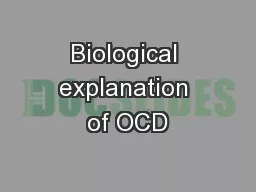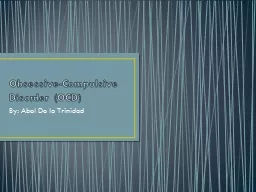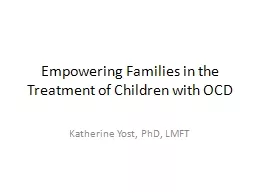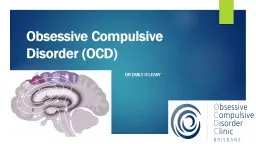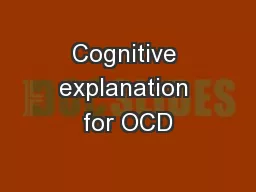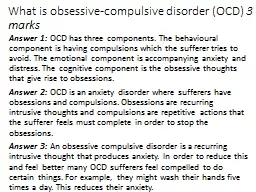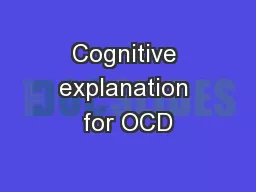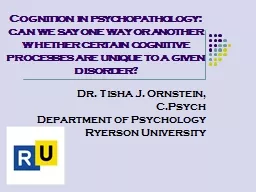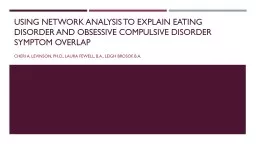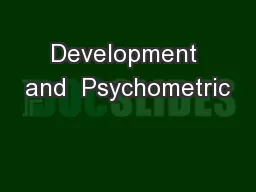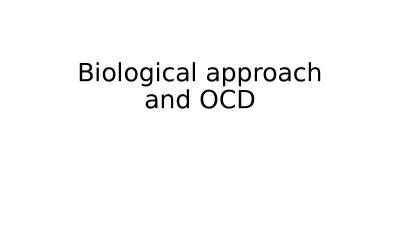PPT-Biological explanation of OCD
Author : faustina-dinatale | Published Date : 2017-08-03
Brain Activity Changes in brain activity Brain scans have shown that people with OCD seem to show more activity in three brain areas Basal Ganglia Prefrontal Orbital
Presentation Embed Code
Download Presentation
Download Presentation The PPT/PDF document "Biological explanation of OCD" is the property of its rightful owner. Permission is granted to download and print the materials on this website for personal, non-commercial use only, and to display it on your personal computer provided you do not modify the materials and that you retain all copyright notices contained in the materials. By downloading content from our website, you accept the terms of this agreement.
Biological explanation of OCD: Transcript
Download Rules Of Document
"Biological explanation of OCD"The content belongs to its owner. You may download and print it for personal use, without modification, and keep all copyright notices. By downloading, you agree to these terms.
Related Documents

